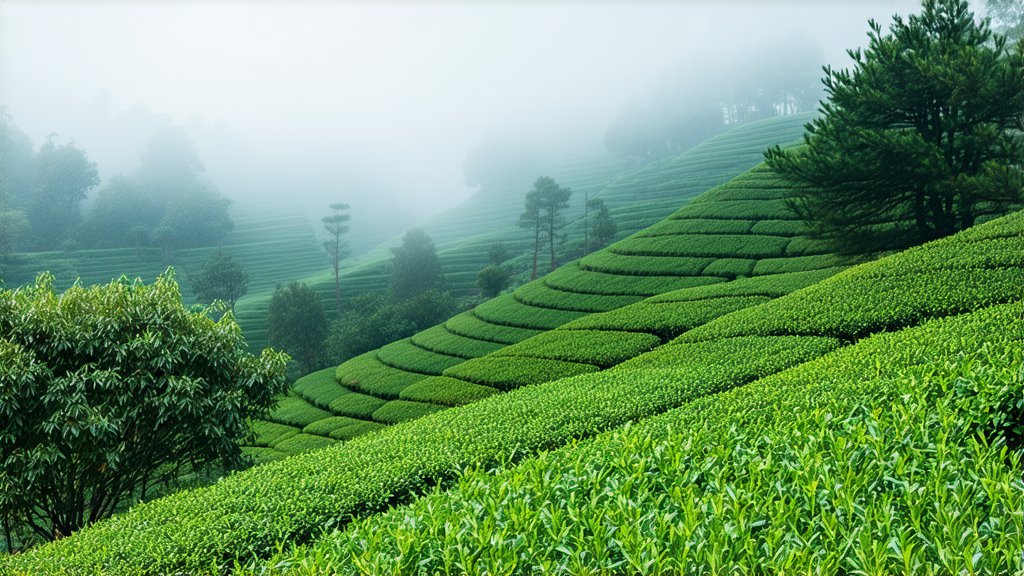
Longjing tea, also known as Dragon Well tea, is one of China's most renowned and cherished green teas. Originating from the scenic region of West Lake in Hangzhou, Zhejiang Province, Longjing has captivated tea connoisseurs for centuries with its unique flavor profile, elegant appearance, and rich cultural heritage. This article delves into the fascinating history, varieties, meticulous production methods, and art of appreciating Longjing tea, offering an immersive journey into the world of this exquisite Chinese green elixir.
History and Origins
The legend of Longjing tea dates back to the Tang Dynasty (618-907 AD), but its cultivation and popularity soared during the Qing Dynasty (1644-1912). It was during this period that the tea gained royal favor and became a symbol of imperial prestige. The name "Longjing" translates to "Dragon Well," referring to a well located near the tea plantations, which was believed to be inhabited by a dragon. This mystical association added to the allure of Longjing tea, further solidifying its status as a premium beverage.
Varieties of Longjing Tea
Longjing tea comes in several distinct grades, each characterized by its leaf size, shape, and quality. The highest grade, known as "Xi Hu Long Jing" or "West Lake Dragon Well," is handpicked from tea bushes surrounding West Lake. These leaves are smaller, more tender, and possess a more refined flavor compared to other grades. Other notable varieties include "Qian Tang Long Jing," grown in the Qiantang region, and "Yue Fei Long Jing," which hails from Yue Fei, another picturesque area in Zhejiang.
Artistry in Production: The Pan-Frying Process
The magic of Longjing tea lies not only in its origin but also in the intricate craftsmanship employed during its production. The process begins with careful handpicking of the youngest tea buds and leaves, typically during the early spring harvest when the new growth is at its freshest. Once harvested, the leaves undergo a series of meticulous steps to transform them into the distinctive flat, sword-like shape characteristic of Longjing tea.
The heart of Longjing tea production is the pan-frying technique, a skill passed down through generations. Freshly picked leaves are first briefly roasted in a wok over high heat to halt oxidation and preserve their vibrant green color. This initial roasting step also helps to release the natural aromas within the leaves.
Next, the leaves are transferred to a larger, flatter pan where skilled artisans use their hands to toss, press, and shape the leaves into their iconic flat form. This process requires great dexterity and precision, as the leaves must be constantly moved to ensure even heating and prevent burning. The shaping process not only enhances the visual appeal of Longjing tea but also contributes to its unique texture and flavor profile.
After shaping, the leaves undergo a final drying phase, either through continued pan-frying or by spreading them out to air dry. This last step removes any remaining moisture, ensuring the tea's longevity and stability.
Appreciating Longjing Tea: A Symphony for the Senses
To truly savor Longjing tea is to engage in a multisensory experience that celebrates its nuanced flavors and delicate aromas. Here are some guidelines for an authentic Longjing tea ceremony:
-
Preparation: Begin by selecting a transparent glass or a white porcelain cup to fully appreciate the tea's color and clarity. Use water heated to approximately 80°C (175°F) to avoid scalding the tender leaves.
-
Infusion: Place about 3 grams (roughly a teaspoon) of Longjing tea leaves into the vessel. Gently pour the hot water over the leaves, allowing them to unfurl gracefully. Observe the mesmerizing dance of the leaves as they rehydrate and release their essence.
-
Aroma: Before taking your first sip, take a moment to inhale deeply the subtle fragrance emanating from the brewed tea. Notes of chestnut, sweetness, fresh grassiness, and a hint of floral undertones should greet your senses.
-
Tasting: Sip slowly, allowing the tea to coat your palate. Longjing tea is celebrated for its smooth, mellow taste with a lingering sweetness and a refreshing aftertaste. Pay attention to the balance between its mild bitterness and inherent sweetness, which is a hallmark of high-quality Longjing.
-
Reinfusions: Unlike many other teas, Longjing can be steeped multiple times, revealing different facets of its flavor with each subsequent infusion. Enjoy the gradual unfolding of complexity as you continue to savor this exceptional brew.
In conclusion, Longjing tea stands as a testament to China's profound tea culture and masterful craftsmanship. From its storied past to its meticulous production process and the artful enjoyment it offers, every aspect of Longjing tea invites exploration and appreciation. As you embark on your own journey with this enchanting green elixir, may you find solace in its soothing flavors and connect with a tradition that spans over a millennium.